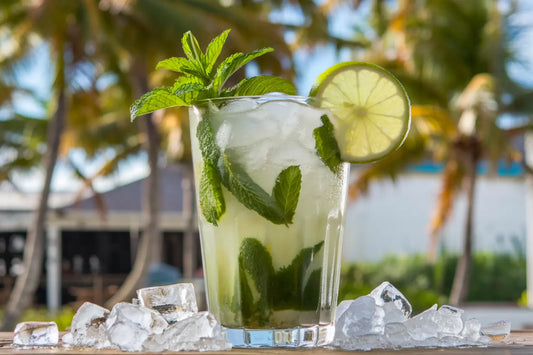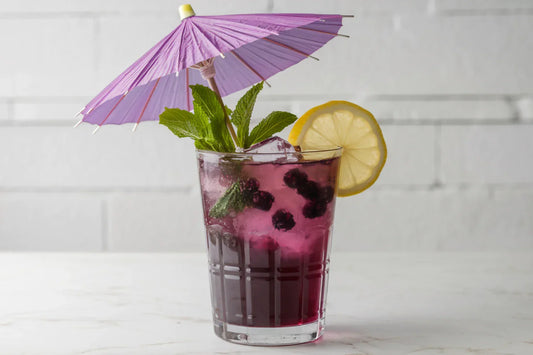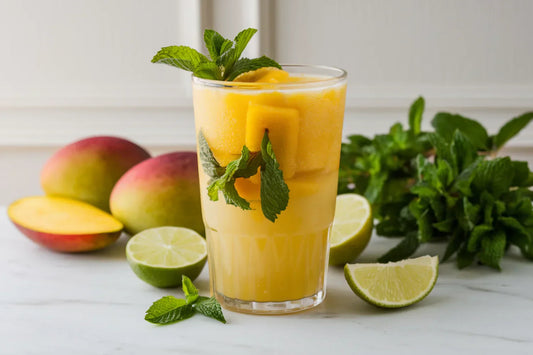What is a Boston Shaker: The Ultimate Guide
BarNeedThe art of mixing cocktails isn’t just about selecting quality spirits and perfect recipes; it also requires mastering the right tools. The Boston shaker, a classic in cocktail-making, holds a prominent place in bars worldwide and among home bartending enthusiasts alike. For beginners, learning how to use it can significantly elevate cocktail-making skills and bring out the true enjoyment of mixology.
This article starts with the basics, delving into the Boston shaker's definition, historical background, and proper usage, helping you better understand and master this essential cocktail tool.
Jump to:
- What is a Boston Shaker?
- How It Works
- History and Origins
- Styles and Materials
- How to Use a Boston Shaker
- Cleaning and Maintenance
- Conclusion
What is a Boston Shaker?
It typically consists of a larger tin with a 28 oz (830 ml) capacity and a smaller tin with an 18 oz (530 ml) capacity, commonly made of stainless steel or glass. When used separately, each piece can function as a mixing container similar to a mixing glass, and when nested together, they create a sealed space that allows thorough shaking for a well-blended drink.
Such a simple structure with a larger capacity allows for rapid cocktail mixing, and it’s also ideal for preparing multiple drinks in a single batch. This versatility makes it a top choice for professional bars and bartenders, as well as an ideal tool for lively settings like home gatherings and parties.

How It Works
In simple terms, the Boston shaker works by using the force and temperature exchange generated through rapid shaking to blend, chill, and dilute cocktails. Didn’t quite catch that? Let’s break it down further:
- Sealing Effect: When the two tins nest together, they create a sealed space, preventing any liquid from leaking out.
- Rapid Cooling: As the liquid shakes and collides with the ice, the temperature quickly drops. The metal’s conductive properties make this cooling process even more efficient, bringing the cocktail to an ideal serving temperature.
- Even Mixing: The vigorous up-and-down motion helps quickly mix all ingredients. This force ensures that every component is evenly distributed, giving the cocktail a consistent taste.
- Dilution Control: As the ice moves within the shaker, it rubs against the liquid, gradually melting and adding just the right amount of water to soften the drink’s strength.
- Aeration: The air introduced during shaking helps create a foamy layer and a smoother texture.
History and Origins
In 19th-century America, as cocktail culture gained popularity, bartenders began to need a tool that was both efficient and easy to use. Although early cocktail tools came in various forms, none could simultaneously meet the demands for durability and convenience. The Boston shaker, with its unique two-piece design, quickly became a favorite among bartenders.
During the Prohibition era (1920-1933), cocktail culture was forced underground, but the Boston shaker remained a staple in many speakeasies. Its design allowed for quick cocktail preparation and durability, making it well-suited for those turbulent times. After Prohibition ended, cocktail culture experienced a resurgence, and the Boston shaker spread worldwide, becoming an essential tool for many classic cocktails. Today, it’s not only a must-have for professional bartenders but has also become a staple in many home bars.
The exact origin of its name is somewhat unclear, but there are several widely circulated theories:
- Boston was a major port city in American history and one of the birthplaces of bar culture and cocktail traditions. During the 18th and 19th centuries, it attracted a large number of sailors and merchants, and its bars and social spaces flourished. It’s likely that the name Boston shaker is connected to this rich bar culture.
- Throughout the development of bartending tools, various types of shakers have had different functions and designs. The Boston shaker may have been named after the city due to its widespread use there and to distinguish it from the cobbler shaker and the French shaker.
- Another theory suggests that the name may have originated from early marketing and commercial branding. At some point, “Boston shaker” could have been used as a product name, making it popular among consumers.
Styles and Materials
As mentioned earlier, the Boston shaker consists of two parts. The most common styles are two stainless steel tins, or a combination of one stainless steel tin and a glass, commonly referred to as "tin on tin" and "tin on glass."
Tin on tin: Stainless steel tins are durable, highly conductive, allowing the drink to chill quickly, and offer a strong seal. Additionally, their smooth surface makes them easier to clean, making them ideal for frequent use. This style is the current standard choice for most.
Tin on glass: The glass cup is generally heavier and more fragile but offers transparency, allowing bartenders to observe the drink’s color changes and blending process. This is particularly useful for cocktails where color layering is essential.
In addition, some shakers are made with materials like plastic or ceramic. However, these combinations are usually designed to meet specific needs or aesthetic preferences and are not as widely used or popular as the first two styles.

How to Use a Boston Shaker
Now that you’ve learned about the Boston shaker, you’re probably eager to give it a try. If you’re not aiming for fancy techniques, using it is quite simple:
1. Prepare Ingredients: Following the cocktail recipe, add the required spirits, juice, syrup, and other ingredients into the large tin.
2. Add Ice cubes: Add a suitable amount of ice. The ice not only chills the drink but also affects its final dilution.
3. Combine the Tins: Place the smalle tin on top of the large tin, pressing them together to ensure a tight, leak-free seal.
4. Shake and Mix: Hold both ends of the shaker firmly and shake it vigorously for about 10-15 seconds, allowing the ice and liquid to make contact, cool down quickly, and mix thoroughly.
5. Separate the Tins: Separate the tins and pour out the drink. At this point, you can use a Hawthorne or Julep strainer to remove any ice, pulp, or other solid ingredients to ensure a smooth drinking experience.
Cleaning and Maintenance
Regularly cleaning and maintaining your Boston shaker can significantly extend its lifespan and ensure the flavor purity of each cocktail. Here are some practical cleaning and maintenance tips:
- Rinse After Each Use: After making a drink, rinse the shaker immediately to prevent any syrup or juice residues from sticking inside. Although stainless steel doesn’t easily absorb odors, incomplete cleaning over time can still leave faint smells, which may impact the flavor of future drinks.
- Avoid Using the Dishwasher: Is a stainless steel shaker dishwasher-safe? Technically, yes! However, while dishwashers are convenient, the high temperature and water pressure can dull the finish on metal parts. If you're using a tin on glass, the glass portion may be especially vulnerable to breaking from the dishwasher’s vibrations.
- Store in a Spacious, Dry Place: Storing your shaker in a well-ventilated, dry area allows it to air-dry naturally, minimizing the risk of damage and helping it maintain a like-new appearance for as long as possible.
Conclusion
The Boston shaker is not only a bartender’s trusted tool but also an ideal partner for home bar enthusiasts looking to enhance their skills. Its simple design and efficient functionality make cocktail mixing easier and more enjoyable. Whether you’re aiming to craft a classic martini or experiment with a fresh, creative cocktail, this tool helps you bring bar-quality drinks to your home.
As you dive eagerly into your cocktail journey, I hope this guide provides valuable insights. Cheers, and happy mixing!




